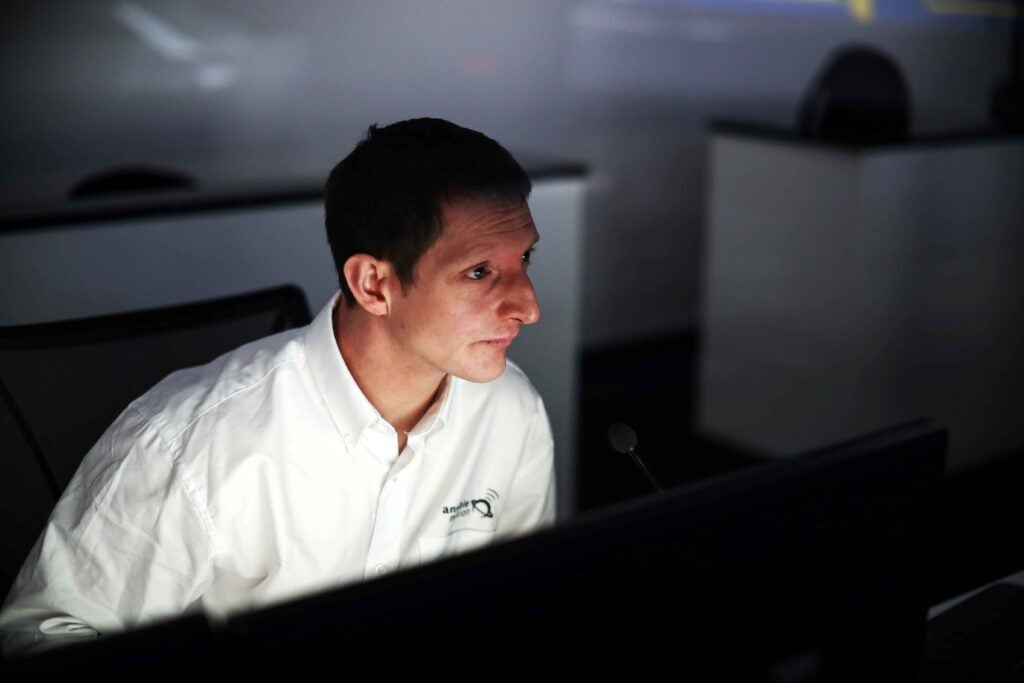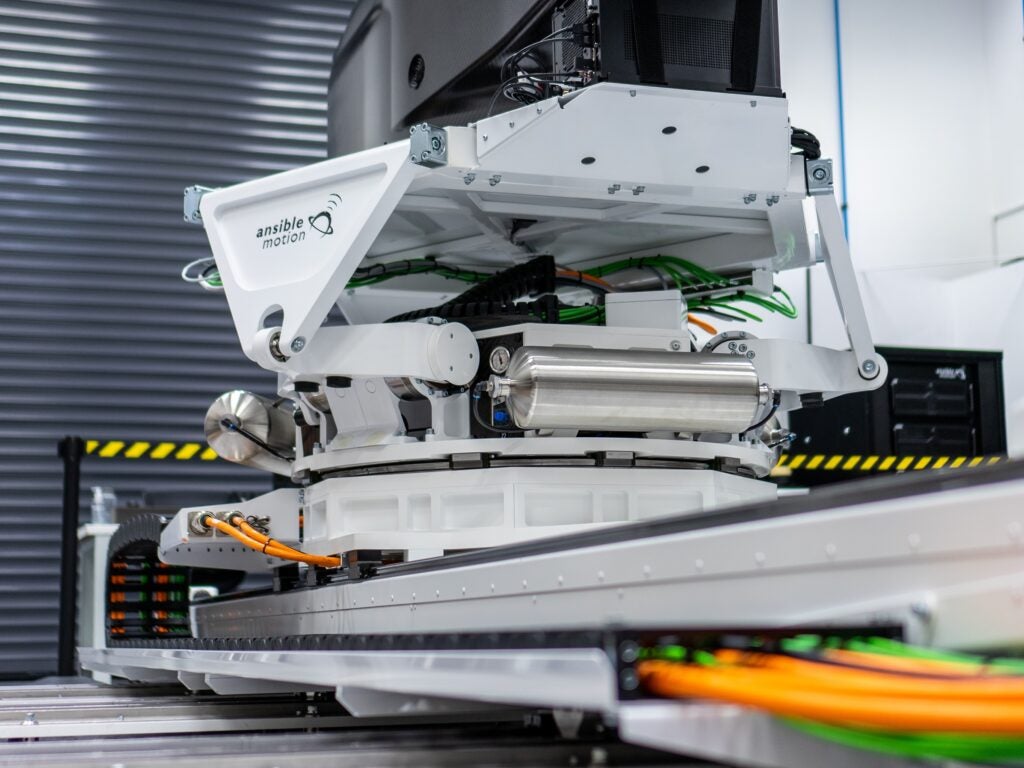
Autonomous driving is a key talking point within the industry, but as many struggle to master the challenge of its evolution from current ADAS, could Driver-in-the-loop simulations be the way forward?
The goal of highly automated and ultimately autonomous driving is a key part of the future ambitions for the automotive industry. On the road to that goal, manufacturers around the world aim to test and fit more advanced driving assistance systems (ADAS) into their vehicles.
However, due to the unpredictable nature of driving scenarios due to unforeseen circumstances such as pedestrians, cyclists, roadworks, and animals, this is a serious challenge.
Founded in 2009 Ansible Motion creates and deploys technology associated with the physical and logical simulation of human directed vehicles. The company offer a range of automotive Driver-in-the-loop (DIL) simulators used by drivers and product development engineers.
At present, the company is utilising the DIL technology to provide a robust and repeatable simulation method to evaluate the growing number of scenarios which may present themselves to autonomous vehicles.
We spoke to Ian Haigh, sales team lead, commercial group, Ansible Motion to find out more.

US Tariffs are shifting - will you react or anticipate?
Don’t let policy changes catch you off guard. Stay proactive with real-time data and expert analysis.
By GlobalData
Just Auto: Could you provide me with some background on the company?
Ian Haigh: Ansible Motion has been designing and supplying automotive Driver-in-the-Loop simulators for more than a decade. In 2009, we released the first commercially available, high-dynamic, onset-cued motion system designed specifically for automotive simulation.
Since that time, the company has grown to offer a complete product range of turnkey DIL simulators, from compact, stationary offerings up to full-size, dynamic simulators.
Our DIL simulation offerings are engineering tools and they are used primarily by vehicle product design and development teams. Our customers use DIL simulators because it allows them to explore new concepts early and often in their development process.
They can make discoveries about their vehicles in real-world situations and evaluate the impacts of design changes before any metal is cut.
Could you explain the DIL simulators and how they work?
Fundamentally, our aim is to connect real people with virtual vehicles and world-spaces. That means we’re bringing people into contact with what would otherwise be computer simulations of cars, and providing ‘virtual test driving’ experiences inside a lab environment instead of out on a physical proving ground or out on real public roads.
Making this happen, providing convincing, realistic virtual test drives is really our speciality. We take care of all the heavy lifting that makes this possible behind the scenes. That way, our customers don’t have to worry about it – they can just climb aboard and get on with the task at hand, which is developing their cars.
If we lift the curtain on DIL simulations, the first things we’ll see are a number of software and hardware systems working together in real time, like an orchestra. Real time execution and synchronicity is a must because a real person is always ‘in the loop,’ always participating and interacting.
If anything lags or mis-commutates physical, visual, or auditory information to the human participant, the virtual test drive would not work, would not be acceptable. So, our top layer of work is to ensure that all the software and hardware systems are working together cohesively, from a turn-key system perspective.
Beyond this, it’s a matter of matching the content of the DIL simulator, in a product supply sense, to the type of work being done with it, to the anticipated use cases. To this end, we offer a range of different DIL simulator products – namely our Theta series, Sigma series, and Delta series product lines. Each product range has different content that’s meant to serve different automotive development tasks.
Our Theta series DIL simulators are compact, stationary systems – and sometime portable. These simulators provide a gateway into the DIL world, in which a person can connect and participate with highly sophisticated vehicle and environment physics simulations with a very small footprint.
Our Sigma series then brings in more of the real-car experience for experiments where this might be required – such as V2X studies or HMI work – where a realistic or representative cabin surround is needed. Our flagship Delta series throws in everything that we can offer in terms of DIL technology, including full-size, high-performance motion capability.
The Delta series provides complete sensory immersion, so expert evaluators can experience realistic, informative virtual test-driving sessions.
How can this technology assist with the development of autonomous vehicles?
Driver-in-the-Loop remains a powerful and useful product development tool, even for Level 5 autonomy – where the driver actually becomes an occupant. Even when the task of driving is removed, you still have a human being interacting with a vehicle and deciding whether or not they are having a good experience, so any tool like DIL simulation that offers a sneak preview of this interaction will be useful in developing the vehicle.
But, of course, we will not be jumping straight to Level 5 autonomy. In vehicles with part-time self-driving capability, there are a number of human participatory and behavioural issues that demand attention.
For example, in a human-centric design framework (which is entirely appropriate for cars as consumer products) it is well worth studying and understanding human behaviours when faced with new technologies.
How does a person interfere with an autonomous handover transition? Which audio, tactile, and visual cues are best suited for take-over task alerts and warnings? When in autonomous mode, will a person’s engagement in non-driving tasks be uncomfortable or problematic? Are alternative seating arrangements practical or desirable when a vehicle is actually in motion? How much autonomous action should be introduced if the goal is to improve vigilance, without fundamentally disrupting a driver’s sense of safety or vehicle control? The list is extensive.
Aside from autonomous driving where else has this technology been used?
You can find our DIL simulators in use around the world at automotive OEMs, Tier 1s, tyre manufacturers, high-level motorsport organisations, universities, and research facilities. The applications and use cases are extensive and include all the traditional areas of automotive product development that you might imagine.
Fundamental chassis development (suspension, steering, tyres, kinematics, ride) as well as active chassis controls is a key area. The vehicle dynamics arena is where you’ll see a number of published customer case studies regarding the use of our simulators.
Other popular areas these days are NVH, powertrain and especially EV development. Motorsport is still a sector we supply to (for race preparation and setup optimization), but much more of our business today is centred around road cars.
Most of our recent projects have had elements of ADAS, Active Safety and autonomous vehicles and customers are increasingly realising that drive in the loop is useful for HMI and infotainment user interface development as well as traditional human factors experiments.
Experiments can be conducted repeatably and safely, within the confines of a controlled lab environment, so there is no risk for people or machinery. Infinite environment and scenario possibilities can be explored as well – many of which might be impossible or terribly expensive to replicate in the real world.
For example, what happens when it’s raining? What happens if there’s a tyre puncture? What happens if there is a malfunction and failsafe mode is engaged? In a DIL simulator lab, these cases are just a few computer keystrokes away.
What are the key benefits of this technology when looking at the automotive industry?
Embedding DIL simulation into the core vehicle development process is typically seen by our customers as the best way to achieve return on investment.
Automotive manufacturers are faced with a continued compression of their development cycles, with time-to-market pressures mounting by the day. Simultaneously, they are expected to embrace and integrate more technologies than ever before.
It’s a hard task, and simulation is clearly seen as one of the key tools that can come to the rescue. Offline simulations are already an integral part of the entire vehicle development process, of course. It begins in the earliest stages, during pre-development, when market targets are first being established and it carries on into post-production in support of minor and major model changes.
But most of the impact is being seen on the front end. Case in point: Last year, General Motors announced that its Cadillac Lyriq, an all-electric SUV, was rolling out nine months ahead of schedule. This is an astounding beating-of-the-clock for any new vehicle, much less one that’s this complex and held to such high market expectations. There’s only one way this could have been accomplished – through heavy reliance upon virtual engineering and simulation.
Because Driver-in-the-Loop has the unique ability to connect real people with simulation environments, even at the front end of vehicle developments, it stands at the ready to serve the cause – and serve it well.




